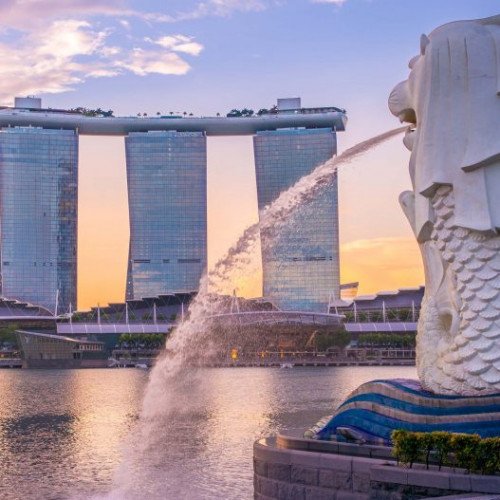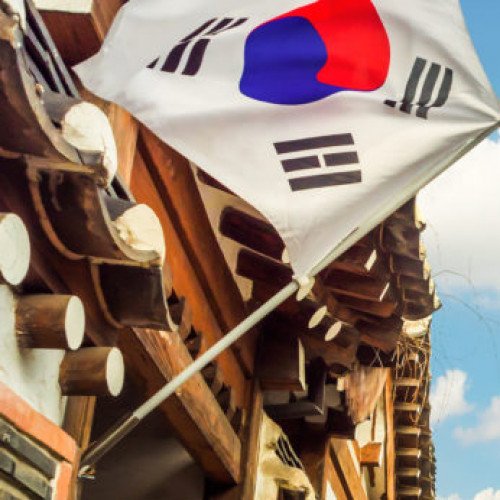Which country is more female traveler friendly: Korea vs Singapore

Singapore
Singapore ( (listen)), officially the Republic of Singapore, is a sovereign island city-state in maritime Southeast Asia. It lies about one degree of latitude (137 kilometres or 85 miles) north of the equator, off the southern tip of the Malay Peninsula, bordering the Straits of Malacca to the west, the Riau Islands (Indonesia) to the south, and the South China Sea to the east. The country's territory is composed of one main island, 63 satellite islands and islets, and one outlying islet, the combined area of which has increased by 25% since the country's independence as a result of extensive land reclamation projects. It has the second greatest population density in the world. The country has almost 5.7 million residents, 61% (3.4 million) of whom are Singaporean citizens. There are four official languages of Singapore: English, Malay, Chinese and Tamil. English is the lingua franca. Multiracialism is enshrined in the constitution, and continues to shape national policies in education, housing, and politics. Although its history stretches back millennia, modern Singapore was founded in 1819 by Sir Stamford Raffles as a trading post of the British Empire. In 1867, the colonies in East Asia were reorganised and Singapore came under the direct control of Britain as part of the Straits Settlements. During the Second World War, Singapore was occupied by Japan in 1942, but returned to British control as a separate crown colony following Japan's surrender in 1945. Singapore gained self-governance in 1959, and in 1963 became part of the new federation of Malaysia, alongside Malaya, North Borneo, and Sarawak. Ideological differences led to Singapore being expelled from the federation two years later, becoming an independent country. After early years of turbulence and despite lacking natural resources and a hinterland, the nation rapidly developed to become one of the Four Asian Tigers based on external trade, becoming a highly developed country; it is ranked ninth on the UN Human Development Index, and has the second-highest GDP per capita (PPP) in the world. Singapore is the only country in Asia with an AAA sovereign rating from all major rating agencies. It is a major financial and shipping hub, consistently ranked the most expensive city to live in since 2013, and has been identified as a tax haven. Singapore is placed highly in key social indicators: education, healthcare, quality of life, personal safety and housing, with a home-ownership rate of 91%. Singaporeans enjoy one of the world's longest life expectancies, fastest Internet connection speeds and one of the lowest infant mortality rates in the world. Singapore is a unitary parliamentary republic with a Westminster system of unicameral parliamentary government. While elections are considered generally free, the government exercises significant control over politics and society, and the People's Action Party has ruled continuously since independence. One of the five founding members of ASEAN, Singapore is also the headquarters of the Asia-Pacific Economic Cooperation (APEC) Secretariat and Pacific Economic Cooperation Council (PECC) Secretariat, as well as many international conferences and events. Singapore is also a member of the United Nations, World Trade Organization, East Asia Summit, Non-Aligned Movement and the Commonwealth of Nations.
Statistics for this Xoptio

Korea
Korea (or Korean Peninsula) is a region in East Asia. Since 1945 it has been divided into two sovereign states: North Korea (officially the "Democratic People's Republic of Korea") and South Korea (officially the "Republic of Korea"). Korea consists of the Korean Peninsula, Jeju Island, and several minor islands near the peninsula. It is bordered by China to the northwest and Russia to the northeast. It is separated from Japan to the east by the Korea Strait and the Sea of Japan (East Sea). During the first half of the 1st millennium, Korea was divided between the three competing states of Goguryeo, Baekje, and Silla, together known as the Three Kingdoms of Korea. In the second half of the 1st millennium, Silla defeated and conquered Baekje and Goguryeo, leading to the "Unified Silla" period. Meanwhile, Balhae formed in the north, superseding former Goguryeo. Unified Silla eventually collapsed into three separate states due to civil war, ushering in the Later Three Kingdoms. Toward the end of the 1st millennium, Goguryeo was resurrected as Goryeo, which defeated the two other states and unified the Korean Peninsula as a single sovereign state. Around the same time, Balhae collapsed and its last crown prince fled south to Goryeo. Goryeo (also spelled as Koryŏ), whose name developed into the modern exonym "Korea", was a highly cultured state that created the world's first metal movable type in 1234. However, multiple incursions by the Mongol Empire during the 13th century greatly weakened the nation, which eventually agreed to become a vassal state after decades of fighting. Following military resistance under King Gongmin that ended Mongol political influence in Goryeo, severe political strife followed, and Goryeo eventually fell to a coup led by General Yi Seong-gye, who established Joseon in 17 July 1392. The first 200 years of the Joseon era were marked by relative peace. During this period, the Korean alphabet was created by Sejong the Great in the 15th century and there was increasing influence of Confucianism. During the later part of the dynasty, Korea's isolationist policy earned it the Western nickname of the "Hermit Kingdom". By the late 19th century, the country became the object of imperial design by the Empire of Japan. After the First Sino-Japanese War, despite the Korean Empire's effort to modernize, the country was annexed by Japan in 1910 and ruled by it until the end of World War II in August 1945. In 1945, the Soviet Union and the United States agreed on the surrender of Japanese forces in Korea in the aftermath of World War II, leaving Korea partitioned along the 38th parallel. The North was under Soviet occupation and the South under U.S. occupation. These circumstances became the basis for the division of Korea by the two superpowers with two different ideologies, exacerbated by their inability to agree on the terms of Korean independence. The Communist-inspired government in the North received backing from the Soviet Union in opposition to the pro-Western government in the South, leading to Korea's division into two political entities in 1948: North Korea, and South Korea. Tensions between the two resulted in the outbreak of the Korean War in 1950. With involvement by foreign troops, the war ended in a stalemate in 1953, but without a formalized peace treaty. This status contributes to the high tensions that continue to divide the peninsula. Both governments of the two Koreas continue to claim to be the sole legitimate government of this region.